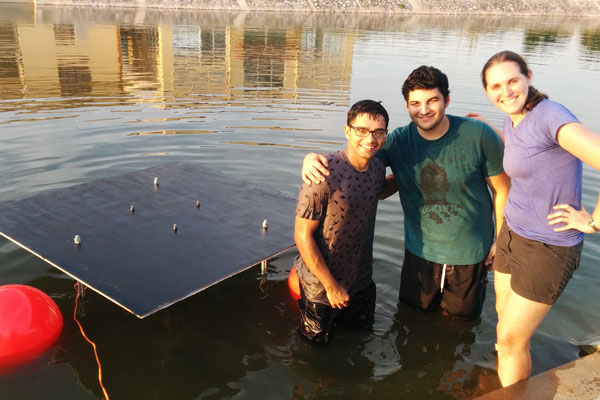December 17, 2015 — A new multidisciplinary collaboration from the Centre for Global Engineering (CGEN)is bringing together researchers from across the Faculty of Applied Science & Engineering to address hunger and malnutrition, which affect billions of people around the world.
The Food & Nutrition Security Engineering Initiative (FaNSEI) seeks to leverage the Faculty’s diverse expertise to advance engineering solutions to these issues. According to Professor Yu-Ling Cheng (ChemE), director of CGEN, the fact that food and nutrition are complex and intertwined with issues like agricultural productivity, water availability, energy resources, food preservation, transport and storage make them ideal challenges for engineers to take on.
“Many of our professors already work in areas that are relevant across the entire value chain of food production, but may not have thought of themselves as being able to contribute to food-related challenges,” said Cheng. “This project is about connecting the dots between our faculty’s expertise and global problems.”
The group first met in October and has received seed funding from the Dean’s Strategic Fund, which supports strategic collaborations that have a broad impact in the Faculty. FaNSEI members include Professors Edgar Acosta (ChemE), Stewart Aitchison (ECE), Amy Bilton (MIE), Chi-Guhn Lee (MIE), Timothy Chan (MIE), Levente Diosady (ChemE), Elizabeth Edwards (ChemE), Emma Master (ChemE) and Arun Ramchandran (ChemE). The team has also sought input from U of T researchers outside engineering, including plant biologists and experts in food security and nutrition.
According to the World Health Organization, 800 million people around the worlddo not have enough to eat to be healthy. Even more — as many as 2 billion — suffer from deficiencies of key nutrients that lead to malnourishment.
Improving aquaculture
Fish is a key source of protein worldwide, and in Vietnam, fish farming accounts for more than five per cent of gross domestic product. Any innovation to improve the productivity of these farms could have a significant impact on food security and nutrition.
Professor Amy Bilton and her team have taken up this challenge by looking at sustainable ways to raise the level of dissolved oxygen in fish ponds. “Oxygen is what fish need to grow and live; it’s a key factor that impacts productivity,” she said. In the developed world, farmers use electric blowers or paddlewheels to aerate the water. But in the developing world, electricity is not always reliable, and the high cost of buying equipment is a barrier.
Bilton and her team have designed a passive aerator that uses solar heat to circulate water, eliminating the need for costly equipment or electricity. “In nature, sunlight interacts with algae and produces oxygen, but that really only happens at the top of the pond,” Bilton said. “What we’re doing is circulating the water to bring that oxygen-rich layer down to the bottom.” Preliminary results show the device could increase the level of dissolved oxygen in the water by as much as 30 per cent, which in turn could increase fish production.
Bilton has partnered with a U of T alumnus, Tuan Nguyen Quang, who now is Vice President of the National Institute for Science and Technology Policy and Strategy Studies in Vietnam. Quang arranged for a machine shop in Hanoi to build a prototype based on the design Bilton and her team provided. Last month, the prototype was installed in a test facility in Vietnam. The team also travelled to Bangladesh to scout out possible sites for testing in that country.
